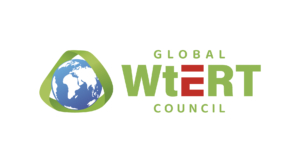M.S. Thesis: Comparison of Operating Pyrolysis Processes in China.
By Jianrui Ma and Qidi Zhong
Advisors: Dr. A.C. (Thanos) Bourtsalas and Prof. Nickolas J. Themelis
Department of Earth and Environmental Engineering
Fu Foundation School of Engineering & Applied Science
Columbia University
December 2018
In 2018, about 380 million tons of plastics were produced globally. The amount of waste plastics in China has increased to over 60 million tons per year and has been is estimated that it will represent 14% of the total municipal solid waste (MSW) by 2030. However, the estimated recycling rate of plastics is about 9% because the many types of plastics of different composition, color, and size make it difficult to re-process the plastics to the original materials. Also, the cost of separate collection of plastics is relatively high. Hence, most of the used plastics are disposed as trash and end up in landfills or, preferably, to waste to energy plants.
In this study, pyrolysis is considered as a promising method of disposing mixed plastics by transforming them into oil and carbon black. Four types of pyrolysis processes in China were examined and are discussed in this report: The Kingtiger, Henan Doing, Huayin, and Niutech processes.
Three major disposal methods for MSW are landfilling, incineration, and controlled combustion with energy recovery (waste-to-energy or WTE). However, landfilling is not a sustainable use of land and incineration releases toxic substances which are carcinogenic and have other negative health effects. Pyrolysis is a “green” way to dispose mixed waste plastics and through thermal decomposition to transform organic materials into smaller molecules. The end products have high calorific value and can be used as fuels with economic benefits. The continuous-flow rotary kiln reactor is one of the most important reactors used for pyrolysis of plastic wastes.
Kingtiger is a continuous flow process with capacity of 50 tons per day, using a nearly horizontal rotary kiln with catalyst. The pyrolysis of mixed plastics results in yields of 45% fuel oil, 40% carbon black and 15% combustible gas. The process gas is transferred through a hydroseal to the burners and used as the fuel heating the process. The solid residue of the pyrolysis is mostly carbon black.
Henan Doing is a continuous process with capacity of 100 tons of waste plastics per day and is also based on a rotary kiln reactor. The oil product accounts for 45% to 52% of the feedstock, the carbon black residue to 30% and combustible gas to 18% to 25%.
Huayin is a catalytic batch process of 10 tons capacity per batch. The pyrolysis products are 45% crude oil, 30% carbon black and 10% combustible gas. As in the case of the other pyrolysis processes, the process gas is recycled and used as fuel to heat the pyrolysis reactor.
Niutech is a continuous pyrolysis process with 43% to 48% oil yield, 32% to 36% carbon black yield and 6% to 8% combustible gas yield.. They use a thermal-catalytic pyrolysis technology. Nintech claims that the catalytic pyrolysis process produces a high quality of carbon black and the operation of the production line is steady.
Based on the physical and chemical mechanisms, the comparison of the above four pyrolysis processes indicates that Henan Doing has the highest capacity and lowest carbon black yield. Niutech has the lowest gas yield. On the basis of the economic and other data provided by Henan Doing, it is concluded that pyrolysis of mixed plastic wastes is technically and economically feasible and also an environmentally friendly process for transforming plastic wastes to useful products.
